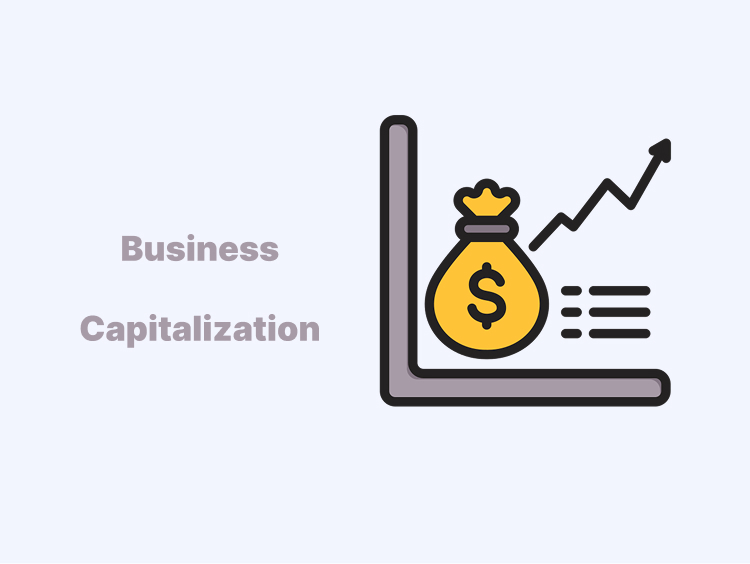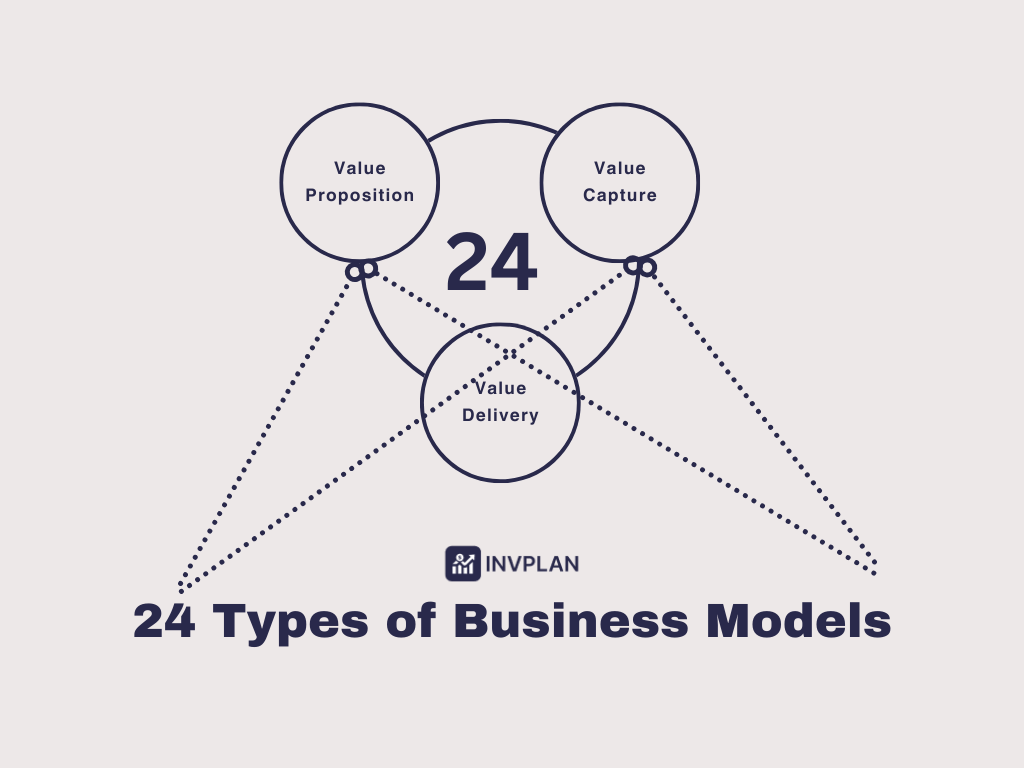Business capitalization shapes how investors view a company’s value and growth potential. It affects important choices in business planning and spending.
We will cover the following topics:
- What business capitalization is.
- How to calculate market capitalization.
- Types of capitalization.
- The difference between capitalization and expense recognition.
- Some case studies.
Let’s start with the main concept.
Understanding Business Capitalization
Capitalization is one of the important aspects of financial decisions. It refers to the total amount of capital used in a business.
That helps you solve many financial management problems.
Market capitalization (market cap) is the total value of a public company’s shares. It comes from multiplying the current share price by the total number of shares.
This metric helps investors and market participants assess the company’s size and overall market value.
Here is how to calculate the market cap:
Market Cap = Share Price × Total Outstanding Shares
Here is an example:
If a company has 10 million shares and each share costs $50, the market cap is:
10,000,000 × 50 = $500,000,000
This means the company is worth $500 million.
Larger companies have higher market caps, while smaller ones have lower values. Investors use this number to compare companies and assess their size.
The importance:
- It helps investors measure a company’s worth and financial strength.
- It also affects how a company raises money through stocks or loans.
- Business capitalization shows insights into risk levels for potential investors.
- It affects the company’s credit rating and ability to get loans.
People often confuse the terms capital and capitalization or capital structure.
Here is a clearance in detail:
Capital
Capital refers to the total money and assets a company invests. It represents the company’s total wealth.
It is called capital when a business invests a large amount of money. Capital is important for both new and existing businesses.
Capital comes in different forms such as:
- Working capital: The money available for daily operations. It’s calculated as: Working Capital = Current Assets – Current Liabilities.
- Fixed capital: Long-term assets used to run the business.
- Debt capital: Money borrowed from external sources.
- Equity capital: Money raised from investors in exchange for ownership.
- Human capital: The knowledge and experience of employees.
- Social capital: Business relationships-reputation and networks.
Capitalization
It is the total amount of funds a company uses for its operations and growth. Capitalization in business and finance has different meanings depending on the context:
- Accounting capitalization: used to record an expense as an asset instead of an immediate cost.
- Market capitalization (Market Cap): it is the total value of a company’s outstanding shares.
- Capital structure: capitalization is the mix of debt and equity a company uses for funding.
Let’s move on to the business capitalization types.
Types of Capitalization
Capitalization falls into three main types:
- Over capitalization.
- Undercapitalization.
- Watered capitalization.
Let’s take each one in-depth.
Over Capitalization
A company has over-capitalization when it has more capital than needed. This happens when funds are not used properly.
Here is an example:
- A company earns $50,000. If the expected return is 10%, the company should have $500,000 in capital.
- If the company actually has $600,000, it is overcapitalized by $100,000.
- The new return rate will drop to 8.33% instead of 10%.
The reasons for over-capitalization:
Bad money decisions hurt a business and slow growth. Owners lose control and earn less profit if a company sells too many shares. Large loans with high interest make repayment harder.
A company must save enough to replace old equipment. Surprise costs may arise without savings. Also company that pays too much for goodwill makes a company seem more valuable than it is.
High taxes take away profits and leave less money to grow the business. If a company miscalculates how much money it needs, it may face cash shortages or waste funds. Both problems can harm the business.
The causes of over-capitalization:
- It issues too much capital.
- A company borrows too much at high interest rates.
- Not setting aside enough depreciation for assets.
- It pays too much for goodwill.
- High tax rates.
- Miscalculating the needed capital.
Effects of over-capitalization:
- Lower earnings per share.
- Harder to raise new capital.
- The company falls stock prices.
- Business reorganization problems.
- Wasted resources.
Solutions for over-capitalization:
- Better financial management.
- Buying back preferred shares with high dividends.
- Restructuring equity shares.
- Reducing debt.
Under Capitalization
Undercapitalization happens when a company’s actual capital is lower than needed based on its earnings. This does not mean the company lacks money. Instead, it means the company is earning more than expected compared to its capital.
- Gerstenberg: A company is undercapitalized when it earns much higher profits than others in the same industry.
- Hoagland: A company is undercapitalized when its real asset value is greater than its total stock and bonds.
The reasons for under-capitalization:
Underestimating capital needs or future earnings can lead to problems. High productivity may make a company seem more profitable than it is.
Conservative dividend policies keep profits from being reinvested. Owners may want more control. That affects capital decisions. These factors can cause over-capitalization.
Effects of under-capitalization:
- Stock prices may rise too high.
- Stocks become easier to sell.
- More government regulation and taxes.
- Consumers may feel overcharged.
- Increased competition.
Solutions for under-capitalization:
- A company issues new shares.
- It increases share values.
- It gives bonus shares to existing shareholders.
- A company splits shares to lower per-share dividends.
Watered Capitalization
Watered capitalization happens when a company’s assets are worth less than their book value. This means the company has more stock or capital than its actual assets justify.
Watered stock exists when its real value is lower than its book value. That is based on Hoagland.
Causes of watered capital:
- It Buys assets at high prices.
- Poor depreciation policies.
- Company overpays for intangible assets like goodwill or brand names.
Let’s move on to the following section to see the difference between capitalization and expense recognition in accounting.
Capitalization and Expense Recognition in Accounting
Companies record costs in two ways: as expenses or as capital expenditures. The choice affects financial statements and how profits appear.
- Expense: The cost is recorded on the income statement and deducted from revenue. It reduces profit.
- Capitalize: The cost is treated as a long-term asset on the balance sheet. The company spreads the cost over time through depreciation instead of deducing the full amount immediately.
So, how do companies decide?
There is no strict rule to decide whether a cost should be expensed or capitalized. Each company makes its own decisions within accounting guidelines (GAAP). Most companies follow a basic rule:
- Costs above a certain amount are capitalized.
- Smaller costs are expensed as operating expenses.
The Difference Between Undercapitalization and Overcapitalization
Undercapitalization is the condition in which a company does not have enough money to run its business or pay off its debt. It is caused by enough money or poor financial planning.
Overcapitalization occurs when a company has more capital than it can productively use. It results in lower returns.
It can be caused by an inefficient allocation of capital or a decline in business performance.
Undercapitalization
It happens when a company does not have enough money to run properly. This can happen if the company starts with too little money and poor planning. It is risky because it can make the company unstable and scare investors.
A company may face this issue struggle to pay its bills and hurt its reputation. It may need more money and better financial planning to fix this.
Overcapitalization
While overcapitalization happens when a company has more money than it can use properly. This leads to waste and lower profits. It often happens because the company raised too much money or used it poorly.
Share prices drop and earnings go down when this happens. A company can adjust its debt or use extra funds wisely to fix it.
Wrapping Up
In this article, you learned how to calculate market capitalization and its types. Also, we explained the difference between capitalization and expense recognition. Here’s a quick recap:
- Capitalization means the total money a company uses to run and grow. It includes both equity and debt. This helps you in financial planning and investments.
- Market capitalization (market cap) shows a company’s total stock market value: ( Market Cap = Share Price × Total Outstanding Shares ).
- Types of capitalization:
- Overcapitalization: A company has more money than it can use. That leads to lower returns.
- Undercapitalization: A company doesn’t have enough funds to operate or grow. It makes that hard to cover costs.
- Watered Capitalization: A company’s assets are worth less than their recorded value due to overvaluation.
FAQ’s
What is business capitalization?
How do you calculate market capitalization?
What are the types of capitalization?
- Overcapitalization: A company has more money than needed, leading to lower returns.
- Undercapitalization: A company lacks enough funds to operate or grow.
- Watered Capitalization: A company’s assets are worth less than their recorded value.
What is the difference between capitalization and expense recognition?
- Capitalization: The cost is treated as a long-term asset and spread over time.
- Expense Recognition: The cost is recorded immediately on the income statement and deducted from revenue.



